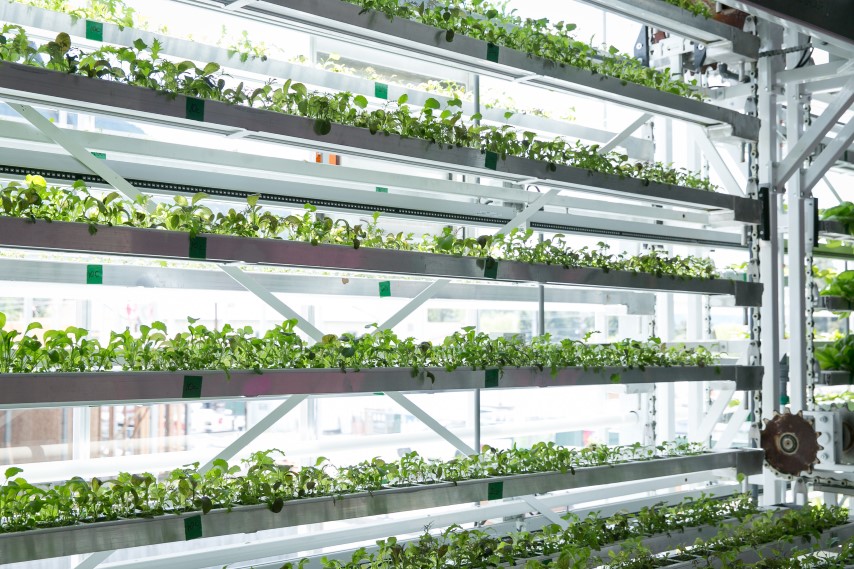Blog: Computer-aided Farming Helps Grow Crops
Blog: Computer-aided Farming Helps Grow Crops


Researchers look to control agricultural systems and increase yield with computer-aided methods and tools, including digital twins and artificial intelligence.
The need to feed more than 8 billion people every day inevitably affects the planet Earth. In fact, with half of habitable land globally land devoted to growing crops and pasturing animals the unavoidable “ecological footprint” has been created. In fact, if everyone lived and consumed like the average American, mankind would need at least 2.4 planets to sustain life.
The first three-story, vertical greenhouse in the northern hemisphere is located in downtown Jackson, Wyo. It produces 100,000 pounds of produce a year on a piece of land 30 feet by 150 feet. But computer-aided strategy of methods and tools developed in a McMaster University lab takes the controlled environment agricultural (CEA) setup even further.
Become a Member: How to Join ASME
CEA is a system of sensors and cameras that collect data that feeds algorithms that make real-time decisions. The system controls heating, cooling, and venting of crops. It oversees irrigation and lighting as well and it strives to reduce waste. Indoor vertical farming done by Bowery is precision agriculture where the BoweryOS is used for monitoring and controlling environmental conditions to stimulate crop growth at an optimal and sustainable rate.
A live dashboard, for example, reports the environmental conditions in the growing area, and with varying autonomy, the system can control the environment directly. Energy consumption—improving the crop-to-energy ratio—is only one goal of precision agriculture facilities that uses less water, zero pesticides, and grows produce optimized for flavor instead of insect resistance.
Agriculture is among the least-digitalized sectors, and according to researchers, digital maturity is an absolute prerequisite to adopting such systems. Those taking the path, for example, must consider cloud storage, data strategy, and various software licenses. Not your usual farmer’s expertise.
Such costs are hard to assess but there are successes. For example, a research team from University of Monterrey’s Department of Computer Science and Operation is using AI and modeling to optimize and automating growing winter strawberries at Canada’s largest controlled-environment vertical strawberry farm in Vaudreuil. The 1,150-square-meter facility produces more than 180,000 kilograms of berries between the months of October and June.
More for You: 5 Agricultural Robots Bringing Food to the Table
Bowery and Strawberry Farm aren’t the only indoor farming companies clearing a path in producing tasty produce today. In the U.S. there is AppHarvest, both a developer and operator of large greenhouse farms. Gotham Greens owns and operates 12 greenhouses across eight states. And then there is Local Bounti, Plenty, Kalera, 80 Acres and AeroFarms. All are indoor farms that use varying degrees of automation.
Cathy Cecere is membership content program manager.
As researchers strive to produce food that is tasty, insect resistant, and matures quickly, they also want to reduce waste, pesticide use, and the level of energy needed to produce every pound of much-needed nutrition. In fact, the $42-million indoor farming market is one way to address the need to control what they cannot in fields open to often harsh elements.
Controlled environment
The first three-story, vertical greenhouse in the northern hemisphere is located in downtown Jackson, Wyo. It produces 100,000 pounds of produce a year on a piece of land 30 feet by 150 feet. But computer-aided strategy of methods and tools developed in a McMaster University lab takes the controlled environment agricultural (CEA) setup even further.
Become a Member: How to Join ASME
CEA is a system of sensors and cameras that collect data that feeds algorithms that make real-time decisions. The system controls heating, cooling, and venting of crops. It oversees irrigation and lighting as well and it strives to reduce waste. Indoor vertical farming done by Bowery is precision agriculture where the BoweryOS is used for monitoring and controlling environmental conditions to stimulate crop growth at an optimal and sustainable rate.
A live dashboard, for example, reports the environmental conditions in the growing area, and with varying autonomy, the system can control the environment directly. Energy consumption—improving the crop-to-energy ratio—is only one goal of precision agriculture facilities that uses less water, zero pesticides, and grows produce optimized for flavor instead of insect resistance.
What is possible?
Agriculture is among the least-digitalized sectors, and according to researchers, digital maturity is an absolute prerequisite to adopting such systems. Those taking the path, for example, must consider cloud storage, data strategy, and various software licenses. Not your usual farmer’s expertise.
Such costs are hard to assess but there are successes. For example, a research team from University of Monterrey’s Department of Computer Science and Operation is using AI and modeling to optimize and automating growing winter strawberries at Canada’s largest controlled-environment vertical strawberry farm in Vaudreuil. The 1,150-square-meter facility produces more than 180,000 kilograms of berries between the months of October and June.
More for You: 5 Agricultural Robots Bringing Food to the Table
Bowery and Strawberry Farm aren’t the only indoor farming companies clearing a path in producing tasty produce today. In the U.S. there is AppHarvest, both a developer and operator of large greenhouse farms. Gotham Greens owns and operates 12 greenhouses across eight states. And then there is Local Bounti, Plenty, Kalera, 80 Acres and AeroFarms. All are indoor farms that use varying degrees of automation.
Cathy Cecere is membership content program manager.